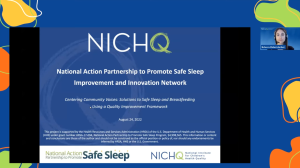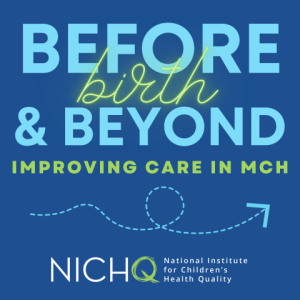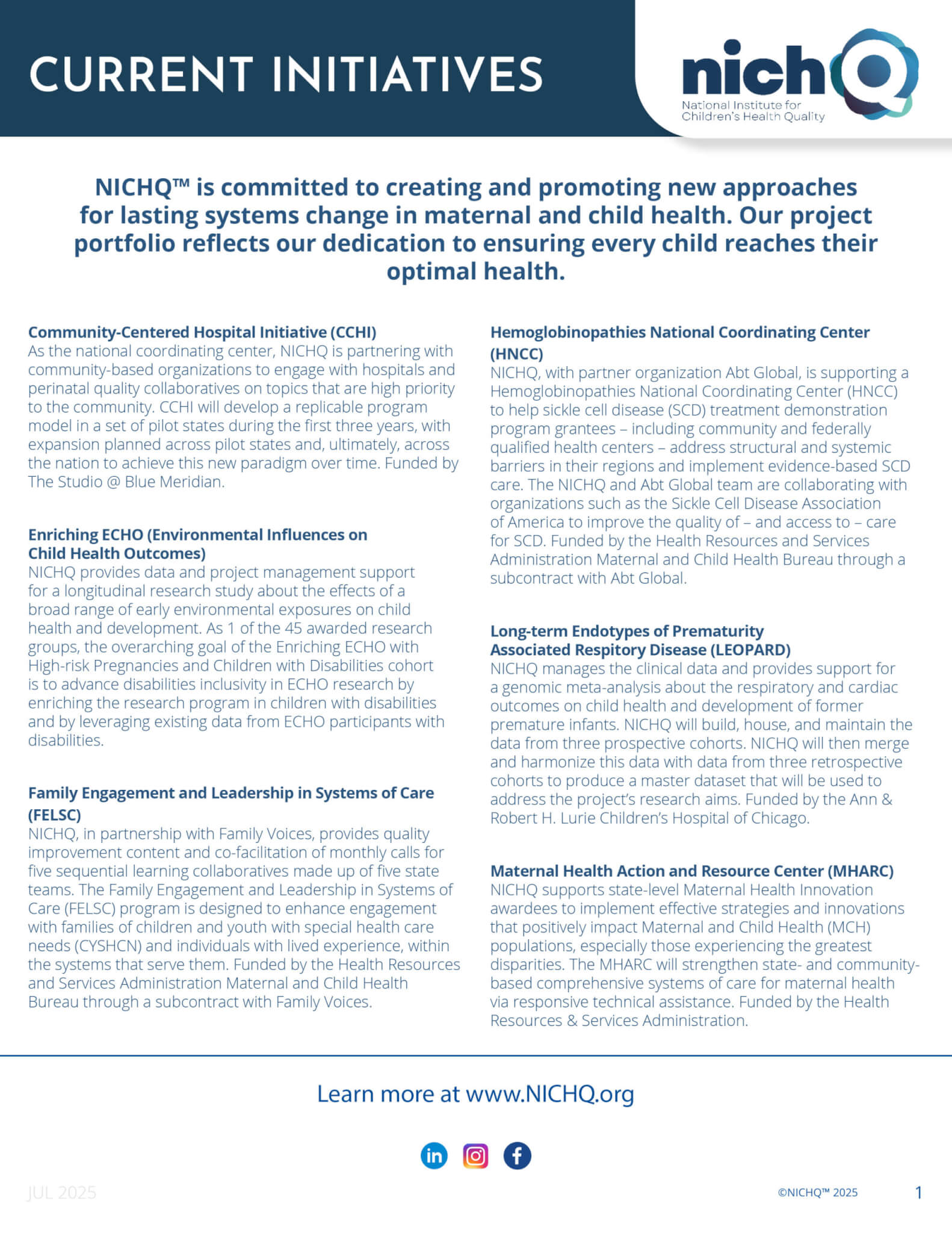National Action Partnership to Promote Safe Sleep Improvement and Innovation Network (NAPPSS-IIN)
NAPPSS-IIN is an initiative to make infant safe sleep and breastfeeding the national norm by aligning stakeholders to test safety bundles in multiple care settings to improve the likelihood that infant caregivers and families receive consistent, evidence-based instruction about safe sleep and breastfeeding.

Promoting Safe Sleep and Breastfeeding practices
Get Involved
Join the NAPPSS-IIN National Coalition, a partnership of over 70 cross-sector, national level organizations that are invested in improving and reducing disparities in infant safe sleep and breastfeeding. Their collaboration is critical to disseminating common messaging and mobilizing their constituencies to make safe sleep and breastfeeding a national norm.
Interested in becoming a member of our growing expertise base through the National Coalition? Email us at [email protected] with your interest to join.
We welcome professional associations, and manufacturers that provide goods and services to infant caregivers, as well as many other types of national organizations.
The National Action Plan
The National Action Plan is a guiding document of strategies and actions to help the NAPPSS-IIN Coalition support safe infant sleep and breastfeeding. Right now, four National Action Teams are working together to drive measurable change in four priority areas.
- Childcare and early education settings: ensure that childcare facilities are aligned with AAP guidelines
- Public media and media relations: spread a common message that integrates safe sleep and breastfeeding practices
- Aligning national efforts: support the spread and sustainability of national and local efforts that can lead to systems-level change
- Developing conversation modules: support a conversational approach between providers and infant caregivers
If you are already a member of the National Coalition, we encourage you to join a National Action Team!
Who
Starting with five pilot hospitals in five states, the initiative will expand to include additional hospitals, social service agencies and childcare touch points across the country. An initial coalition of 70 stakeholder organizations will be expanded to support the initiative.
Our Role
Using our unique change management approach to lead the innovation network. Activities include: providing technical assistance to states on integrating safe sleep and breastfeeding promotion efforts; providing training and resources to systems and community groups on using a conversations approach to engage families to help identify and overcome barriers in integrating safe sleep and breastfeeding; and implementing a safe infant sleep and breastfeeding safety bundle—a structured way of improving the processes of care and patient outcomes—in hospitals and other child care and social services settings.
Funder
This project is funded by the Health Resources and Services Administration Maternal and Child Health Bureau.
Other Information
If you are interested in learning more about this project, email: [email protected].
Project Impact
Promoting better Safe Sleep practices
Project Impact
Promoting better Safe Sleep practices
NICHQ led the National Action Partnership to Promote Safe Sleep Improvement and Innovation Network (NAPPSS-IIN). The NAPPSS-IIN project aim was to make safe sleep and breastfeeding the national norm by aligning stakeholders to test safety bundles in multiple care settings to improve the likelihood that infant caregivers and families receive consistent, evidence-based instruction about safe sleep and breastfeeding. The project worked to address cultural practices and racism on adherence to safe sleep and breastfeeding recommendations. The project also addressed structural racism as the root cause of SUID inequities among Black and Indigenous infants.
Over the five years of the project, an estimated 5,000+ individuals were touched both directly and indirectly, including medical professionals, first responders, birthing professionals, community health advocates, early childcare providers, researchers, community partners/collaborators, and families through educational materials, resources, convenings, trainings, webinars. The NAPPSS-IIN summative evaluation indicated that participants increased their engagement in conversational messaging, with evidence suggesting this may improve safe sleep and breastfeeding promotion, outcomes, and relative disparities. Additionally, NAPPSS-IIN participants increased their number and depth of community collaborations throughout the project, with evidence that this may assist in mitigating organizational capacity limitations in promoting infant safe sleep and breastfeeding. In addition, the NAPPSS-IIN project pursued research opportunities, which resulted in three peer reviewed manuscripts.
External Resources
State Perinatal Quality Collaboratives
List of PQCs funded by the Center for Disease Control and Prevention (CDC)
The Power of PQCs
Video showing the impact that PQCs have on the communities they serve. Produced by the NNPQC.
PQCs in the News
Articles in news outlets covering state PQCs, their activities, and the people that work in the collaboratives.
Patient Safety Bundles
From the Alliance for Innovation on Maternal Health. PSBs are collections of evidence-informed best practices that address clinically specific conditions in pregnant and postpartum people. The NNPQC helps provide TA and support to PQCs in adopting the core AIM Perinatal Mental Health Bundle.
Perinatal Quality Collaboratives
The CDC’s landing page for PQCs, including helpful infographics, videos, and links to help explain what PQCs are, how they work, and stories, learnings, and publications that have come out of the state PQCs.
Related Content
Resources produced by the National Action Partnership to Promote Safe Sleep Improvement and Innovation Network (NAPPSS-IIN) project or on related topics
Meet Our Team
“In our deep organizational work to move along the Equity Systems Continuum from a Savior-Designed System to an Equity-Empowered System, we acknowledge the power of action. The potential is limitless for today’s commitments to improve the systems in which health care and public health professionals work and families receive care.”




